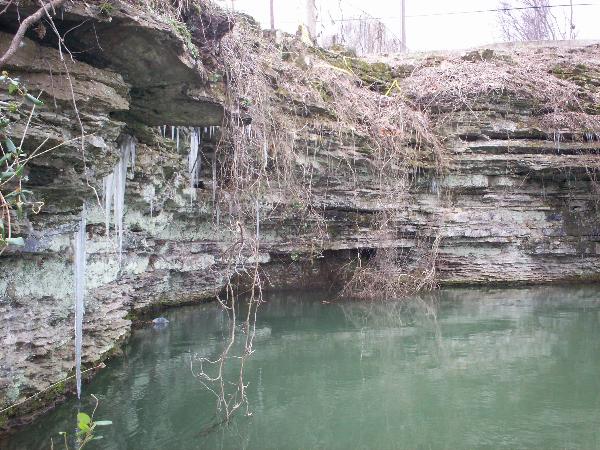
Karst Is a Landscape
A karst landscape has sinkholes, sinking streams, caves, and springs. The term "karst" describes the whole landscape, not a single sinkhole or spring. A karst landscape most commonly develops on limestone, but can develop on several other types of rocks, such as dolostone (magnesium carbonate or the mineral dolomite), gypsum, and salt.
Precipitation infiltrates into the soil and flows into the subsurface from higher elevations and generally toward a stream at a lower elevation. Weak acids found naturally in rain and soil water slowly dissolve the tiny fractures in the soluble bedrock, enlarging the joints and bedding planes.

Kentucky is one of the most famous karst areas of the world. Much of the state's beautiful scenery, particularly the horse farms of the Inner Bluegrass, results from the development of karst landscape. Many of Kentucky's cities, including Frankfort, Louisville, Lexington, Bowling Green, Elizabethtown, Munfordville, Hopkinsville, Russellville, Princeton, Lawrenceburg, Georgetown, Winchester, Paris, Somerset, Versailles, and Nicholasville, are partly or entirely underlain by karst. Springs and wells in karst areas supply water to thousands of homes.
 To log this EarthCache estimate the width of the spring opening, the mouth of the cave.
To log this EarthCache estimate the width of the spring opening, the mouth of the cave.
E-Mail me your answer. Pictures of yourself with your GPSr are appreciated and welcomed but not needed to log.
 ~ Woo Hoo! ~
~ Woo Hoo! ~